|
Your search criteria found 648 images Mission |
| My List |
Addition Date | Target | Mission | Instrument |
Size
|

|
1998-03-26 | Europa |
Galileo |
Near Infrared Mapping Spectrometer |
1650x1950x1 |

|
|||||

|
1998-03-26 | Jupiter |
Galileo |
Near Infrared Mapping Spectrometer |
1000x800x3 |

|
|||||

|
1998-03-26 | Europa |
Galileo |
Solid-State Imaging |
1540x1200x1 |

|
|||||

|
1998-03-26 | Jupiter |
Galileo |
Near Infrared Mapping Spectrometer |
1000x800x3 |

|
|||||

|
1998-03-26 | Europa |
Galileo |
Solid-State Imaging |
950x1200x1 |

|
|||||

|
1998-03-26 | Europa |
Galileo |
Solid-State Imaging |
1600x1280x1 |

|
|||||

|
1998-03-26 | Ganymede |
Galileo |
Near Infrared Mapping Spectrometer |
1588x762x3 |
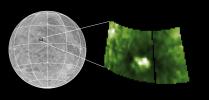
|
|||||

|
1998-03-26 | Europa |
Galileo |
Solid-State Imaging |
820x1275x1 |

|
|||||

|
1998-03-26 | Europa |
Galileo |
Near Infrared Mapping Spectrometer |
1326x863x3 |

|
|||||

|
1998-03-26 | Io |
Galileo |
Near Infrared Mapping Spectrometer |
1017x635x3 |
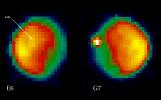
|
|||||

|
1998-03-26 | J Rings |
Galileo |
Solid-State Imaging |
1152x376x3 |

|
|||||

|
1998-03-26 | Jupiter |
Galileo |
Solid-State Imaging |
1400x800x3 |

|
|||||

|
1998-03-26 | Jupiter |
Galileo |
Solid-State Imaging |
1400x800x3 |

|
|||||

|
1998-03-26 | Jupiter |
Galileo |
Solid-State Imaging |
1700x800x3 |

|
|||||

|
1998-03-26 | Jupiter |
Galileo |
Solid-State Imaging |
1700x800x3 |
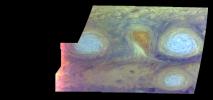
|
|||||

|
1998-03-26 | Jupiter |
Galileo |
Solid-State Imaging |
1900x1000x1 |

|
|||||

|
1998-03-26 | Jupiter |
Galileo |
Solid-State Imaging |
1700x800x1 |
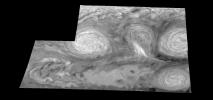
|
|||||

|
1998-03-26 | Jupiter |
Galileo |
Solid-State Imaging |
1700x800x1 |

|
|||||

|
1998-03-26 | Jupiter |
Galileo |
Solid-State Imaging |
1400x800x1 |

|
|||||

|
1998-03-26 | Jupiter |
Galileo |
Solid-State Imaging |
1400x800x1 |

|
|||||

|
1998-03-26 | Jupiter |
Galileo |
Solid-State Imaging |
1700x800x1 |

|
|||||

|
1998-03-26 | Jupiter |
Galileo |
Solid-State Imaging |
1700x800x1 |

|
|||||

|
1998-03-26 | Jupiter |
Galileo |
Solid-State Imaging |
1400x800x1 |

|
|||||

|
1998-03-26 | Jupiter |
Galileo |
Solid-State Imaging |
1400x800x1 |

|
|||||

|
1998-03-26 | Jupiter |
Galileo |
Solid-State Imaging |
1275x800x1 |

|
|||||

|
1998-03-26 | Jupiter |
Galileo |
Solid-State Imaging |
1275x800x1 |

|
|||||

|
1998-03-26 | Jupiter |
Galileo |
Solid-State Imaging |
1275x800x1 |

|
|||||

|
1998-03-26 | Jupiter |
Galileo |
Solid-State Imaging |
1275x800x1 |

|
|||||

|
1998-03-26 | Jupiter |
Galileo |
Solid-State Imaging |
1700x1700x3 |

|
|||||

|
1998-03-26 | J Rings |
Galileo |
Solid-State Imaging |
1151x800x3 |

|
|||||

|
1998-03-26 | Europa |
Galileo |
Solid-State Imaging |
719x732x3 |

|
|||||

|
1998-03-26 | Jupiter |
Galileo |
Solid-State Imaging |
903x787x3 |
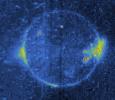
|
|||||

|
1998-03-26 | Io |
Galileo |
Solid-State Imaging |
1000x800x3 |

|
|||||

|
1998-03-26 | Ganymede |
Galileo |
Near Infrared Mapping Spectrometer |
445x525x1 |

|
|||||

|
1998-03-26 | Europa |
Galileo |
Solid-State Imaging |
1710x1320x1 |

|
|||||

|
1998-03-26 | Jupiter |
Galileo |
Solid-State Imaging |
900x1500x1 |

|
|||||

|
1998-03-26 | Jupiter |
Galileo |
Solid-State Imaging |
900x1500x1 |

|
|||||

|
1998-03-26 | Jupiter |
Galileo |
Solid-State Imaging |
900x1500x1 |

|
|||||

|
1998-03-26 | Jupiter |
Galileo |
Solid-State Imaging |
900x1500x1 |

|
|||||

|
1998-03-26 | Jupiter |
Galileo |
Solid-State Imaging |
1200x1500x1 |

|
|||||

|
1998-03-26 | Jupiter |
Galileo |
Solid-State Imaging |
1200x1500x1 |

|
|||||

|
1998-03-26 | Jupiter |
Galileo |
Solid-State Imaging |
1200x1500x1 |

|
|||||

|
1998-03-26 | Jupiter |
Galileo |
Solid-State Imaging |
1200x1500x1 |

|
|||||

|
1998-03-26 | Jupiter |
Galileo |
Solid-State Imaging |
900x1600x1 |

|
|||||

|
1998-03-26 | Jupiter |
Galileo |
Solid-State Imaging |
900x1600x1 |

|
|||||

|
1998-03-26 | Jupiter |
Galileo |
Solid-State Imaging |
900x1600x1 |

|
|||||

|
1998-03-26 | Jupiter |
Galileo |
Solid-State Imaging |
900x1600x1 |

|
|||||

|
1998-03-26 | Jupiter |
Galileo |
Solid-State Imaging |
900x1500x3 |

|
|||||

|
1998-03-26 | Jupiter |
Galileo |
Solid-State Imaging |
900x1500x3 |

|
|||||

|
1998-03-26 | Jupiter |
Galileo |
Solid-State Imaging |
1200x1500x3 |

|
|||||

|
1998-03-26 | Jupiter |
Galileo |
Solid-State Imaging |
1200x1500x3 |

|
|||||

|
1998-03-26 | Jupiter |
Galileo |
Solid-State Imaging |
900x1600x3 |

|
|||||

|
1998-03-26 | Jupiter |
Galileo |
Solid-State Imaging |
900x1600x3 |

|
|||||

|
1998-03-26 | Callisto |
Galileo |
Solid-State Imaging |
2170x1788x1 |

|
|||||

|
1998-03-26 | Io |
Galileo |
Near Infrared Mapping Spectrometer |
2200x1700x3 |

|
|||||

|
1998-03-26 | Io |
Galileo |
Solid-State Imaging |
598x641x3 |

|
|||||

|
1998-03-26 | Io |
Galileo |
Solid-State Imaging |
646x646x3 |

|
|||||

|
1998-03-26 | Callisto |
Galileo |
Solid-State Imaging |
1691x2231x1 |

|
|||||

|
1998-03-26 | Jupiter |
Galileo |
Near Infrared Mapping Spectrometer |
712x725x3 |

|
|||||

|
1998-03-26 | Callisto |
Galileo |
Solid-State Imaging |
1450x700x1 |

|
|||||

|
1998-03-26 | Io |
Galileo |
Near Infrared Mapping Spectrometer |
1225x935x3 |

|
|||||

|
1998-03-26 | Europa |
Galileo |
Solid-State Imaging |
2000x1350x3 |

|
|||||

|
1998-03-26 | Io |
Galileo |
Solid-State Imaging |
1124x712x3 |

|
|||||

|
1998-03-26 | Callisto |
Galileo |
Solid-State Imaging |
3600x3320x1 |

|
|||||

|
1998-03-26 | Jupiter |
Galileo |
Solid-State Imaging |
1200x1600x1 |

|
|||||

|
1998-03-26 | Jupiter |
Galileo |
Solid-State Imaging |
1000x1200x1 |

|
|||||

|
1998-03-26 | Jupiter |
Galileo |
Solid-State Imaging |
1000x1200x1 |

|
|||||

|
1998-03-26 | Jupiter |
Galileo |
Solid-State Imaging |
1200x700x1 |

|
|||||

|
1998-03-26 | Europa |
Galileo |
Near Infrared Mapping Spectrometer |
1279x676x3 |

|
|||||

|
1998-03-26 | Io |
Galileo |
Solid-State Imaging |
1500x1000x3 |

|
|||||

|
1998-03-26 | Io |
Galileo |
Near Infrared Mapping Spectrometer |
1525x1100x1 |

|
|||||

|
1998-03-26 | Europa |
Galileo |
Solid-State Imaging |
1000x800x1 |

|
|||||

|
1998-04-02 | Ganymede |
Galileo |
Photopolarimeter-Radiometer |
432x540x3 |

|
|||||

|
1998-04-02 | Jupiter |
Galileo |
Photopolarimeter-Radiometer |
468x604x3 |

|
|||||

|
1998-04-02 | Jupiter |
Galileo |
Photopolarimeter-Radiometer |
429x585x3 |

|
|||||

|
1998-05-08 | Europa |
Galileo |
Solid-State Imaging |
520x260x3 |

|
|||||

|
1998-05-08 | Europa |
Galileo |
Solid-State Imaging |
1092x1428x3 |

|
|||||

|
1998-05-08 | Callisto |
Galileo |
Solid-State Imaging |
930x550x3 |

|
|||||

|
1998-05-08 | Callisto |
Galileo |
Solid-State Imaging |
749x344x3 |

|
|||||

|
1998-05-08 | Io |
Galileo |
Solid-State Imaging |
1870x635x3 |

|
|||||

|
1998-05-08 | Io |
Galileo |
Solid-State Imaging |
1927x619x3 |

|
|||||

|
1998-05-08 | Europa |
Galileo |
Solid-State Imaging |
2150x1950x1 |

|
|||||

|
1998-05-08 | Europa |
Galileo |
Solid-State Imaging |
2605x3073x1 |

|
|||||

|
1998-05-21 | Europa |
Galileo |
Solid-State Imaging |
2700x2200x1 |

|
|||||

|
1998-05-21 | Europa |
Galileo |
Solid-State Imaging |
1042x643x3 |

|
|||||

|
1998-05-21 | Europa |
Galileo |
Solid-State Imaging |
800x400x1 |

|
|||||

|
1998-05-21 | Europa |
Galileo |
Solid-State Imaging |
814x560x1 |
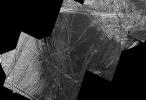
|
|||||

|
1998-05-21 | Europa |
Galileo |
Solid-State Imaging |
856x407x3 |
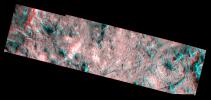
|
|||||

|
1998-05-21 | Europa |
Galileo |
Solid-State Imaging |
4000x2024x1 |

|
|||||

|
1998-05-21 | Europa |
Galileo |
Solid-State Imaging |
3500x2220x1 |

|
|||||

|
1998-06-04 | Ida |
Galileo |
Solid-State Imaging |
1563x915x3 |

|
|||||

|
1998-06-04 | Ida |
Galileo |
Solid-State Imaging |
1563x915x3 |

|
|||||

|
1998-06-04 | Ida |
Galileo |
Solid-State Imaging |
3195x4650x1 |

|
|||||

|
1998-06-04 | Earth |
Galileo |
Solid-State Imaging |
1700x2164x3 |

|
|||||

|
1998-06-08 | Moon |
Galileo |
3053x3053x3 | |

|
|||||

|
1998-06-08 | Moon |
Galileo |
1986x1986x3 | |

|
|||||

|
1998-06-10 | Jupiter |
Galileo |
Solid-State Imaging |
900x900x3 |
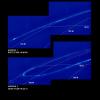
|
|||||

|
1998-06-10 | Jupiter |
Galileo |
Solid-State Imaging |
900x950x3 |

|
|||||

|
1998-06-10 | Jupiter |
Galileo |
Solid-State Imaging |
900x950x3 |

|
|||||

|
1998-06-10 | Jupiter |
Galileo |
Solid-State Imaging |
900x900x3 |

|
|||||

|
 |
 |
 |
 |
 |
 |
 |

|
| 1-100 | 101-200 | 201-300 | 301-400 | 401-500 | 501-600 | 601-700 |
| Currently displaying images: 301 - 400 of 648 |